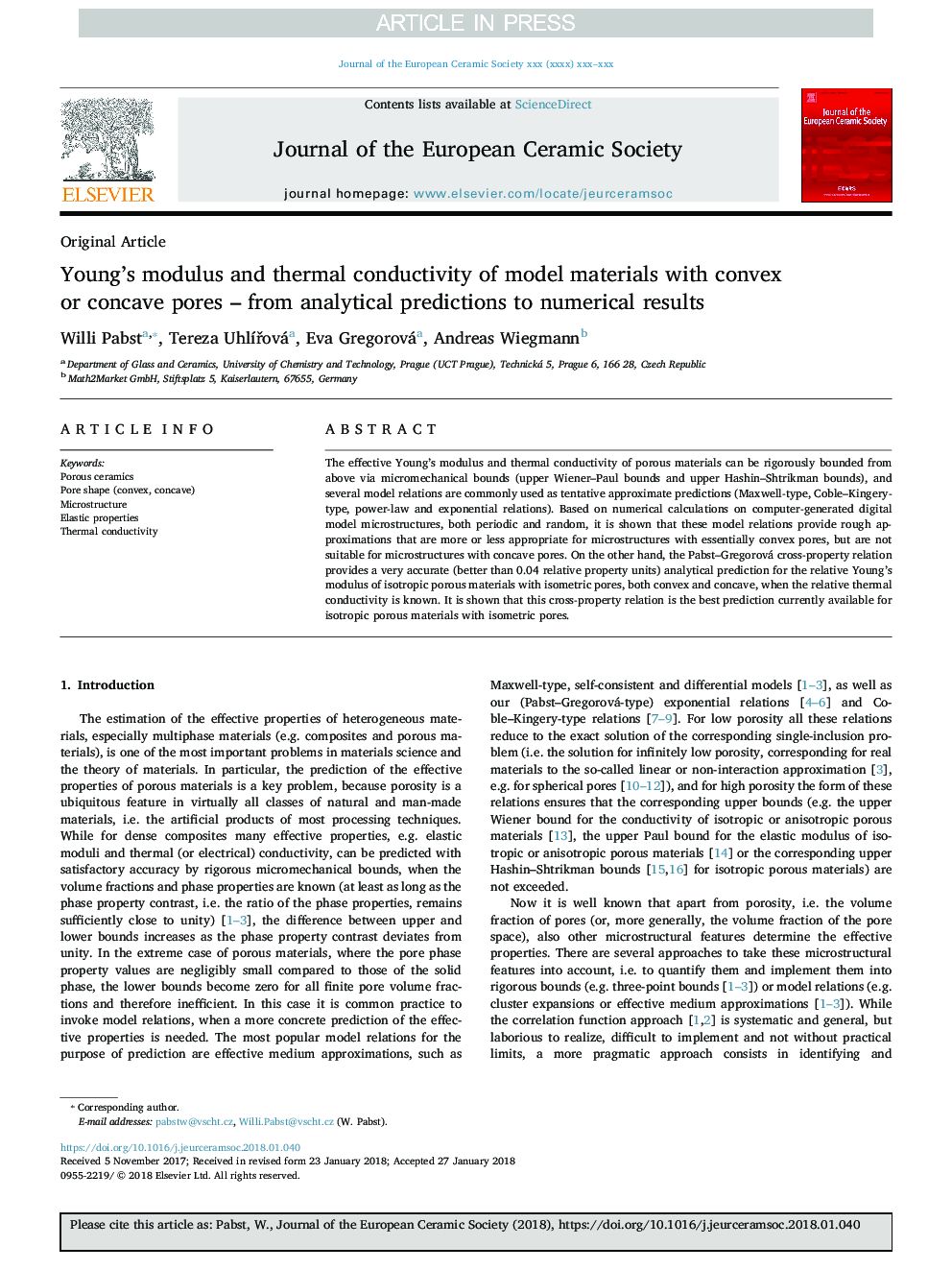| Article ID | Journal | Published Year | Pages | File Type |
|---|---|---|---|---|
| 7898305 | Journal of the European Ceramic Society | 2018 | 14 Pages |
Abstract
The effective Young's modulus and thermal conductivity of porous materials can be rigorously bounded from above via micromechanical bounds (upper Wiener-Paul bounds and upper Hashin-Shtrikman bounds), and several model relations are commonly used as tentative approximate predictions (Maxwell-type, Coble-Kingery-type, power-law and exponential relations). Based on numerical calculations on computer-generated digital model microstructures, both periodic and random, it is shown that these model relations provide rough approximations that are more or less appropriate for microstructures with essentially convex pores, but are not suitable for microstructures with concave pores. On the other hand, the Pabst-Gregorová cross-property relation provides a very accurate (better than 0.04 relative property units) analytical prediction for the relative Young's modulus of isotropic porous materials with isometric pores, both convex and concave, when the relative thermal conductivity is known. It is shown that this cross-property relation is the best prediction currently available for isotropic porous materials with isometric pores.
Related Topics
Physical Sciences and Engineering
Materials Science
Ceramics and Composites
Authors
Willi Pabst, Tereza UhlÃÅová, Eva Gregorová, Andreas Wiegmann,
